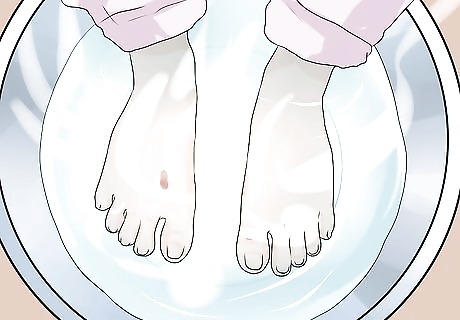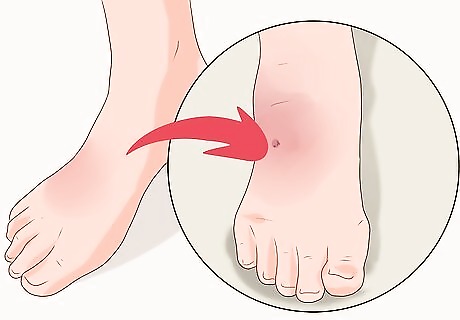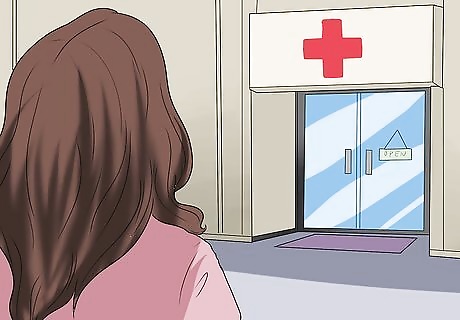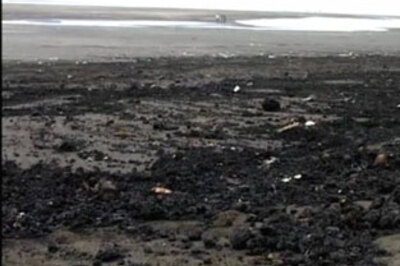
views
X
Research source
Although not usually aggressive, the stingray will use its stinger in self-defense when accidentally stepped on, secreting a venom into the victim's wound. Fortunately, you can follow a simple treatment paradigm if you find yourself in this situation.
Identifying the Severity of Symptoms

Relax. Although alarming and quite painful, stingray wounds are rarely fatal. In fact, most fatalities caused by stingrays are not due to venom intoxication but rather from internal organ injury (if stung in the chest or abdomen), excess blood loss, allergic reaction, or secondary infection. These complications can be managed by trained medical personnel if they occur.

Identify your symptoms. Take a brief moment to identify what your symptoms are. Common symptoms include: Pain Swelling Bleeding Weakness Headache Muscle cramps Nausea/Vomiting/Diarrhea Dizziness/Lightheadedness Palpitations Difficulty breathing Fainting

Prioritize the severity of your symptoms. Medically speaking, certain symptoms are more serious than others. Determine if you are developing an allergic reaction, suffering from excess blood loss, or experiencing venom intoxication. The presence of these symptoms should trigger seeking immediate medical attention. Allergic reaction: Swelling of tongue, lips, head, neck, or other body parts; difficulty breathing, shortness of breath, or wheezing; red and/or itchy rash; fainting or loss of consciousness. Excess blood loss: Dizziness, fainting or loss of consciousness, sweating, elevated heart rate, decreased blood pressure, rapid breathing. Venom intoxication: Headache, dizziness, lightheadedness, palpitations, muscle cramps, seizures.

Obtain appropriate medical care/supplies. Depending on the severity of your symptoms, obtain the medical care/supplies that is most appropriate for you. This may range from obtaining a first-aid kit, visiting the local medic unit, or calling 911 for an ambulance. Whenever in doubt, always choose a higher-level of care (i.e. calling 911).
Taking Care of the Wound

Irrigate the wound with sea water. While still in the water, irrigate the wound with sea water, removing all debris and foreign bodies from the affected area. Use tweezers from a first-aid kit if necessary. Once the area is thoroughly irrigated and all foreign bodies are removed, come out from the water and dry the area off with a clean towel, taking care not to injure yourself further. DO NOT remove any penetrating debris from neck, chest, or abdomen.

Control any bleeding. Bleeding is common after a sting. As always, the best way to stop bleeding is by applying direct pressure at the source or slightly above the source with one finger for a few minutes. The longer the pressure is held, the more likely the bleeding will subside. Try using hydrogen peroxide in conjunction with holding pressure to help stop bleeding if you cannot control it with direct pressure alone. Careful, hydrogen peroxide may sting!

Soak the wound in hot water. You can combine this step with the previous step of applying direct pressure to control bleeding. Soaking the wound in hot water helps alleviate the pain by denaturing the venom protein complex. Optimal temperature is 45°C (113°F), but be certain not to cause any burns. Leave the wound soaking for 30 – 90 minutes, or until the pain has subsided.

Monitor the wound for signs of infection. Proper wound care includes keeping the area clean by applying soap and rinsing with water as well as keeping the wound dry at all times. Keep the wound uncovered and apply antibiotic ointment daily. Avoid non-antibiotic creams, lotions, and ointments. Over the next several days, if the area becomes red, tender, itchy, sore, or begins to swell or develop a cloudy discharge, seek medical attention at the local urgent care center or emergency room. You may need antibiotics and/or drainage of an abscess.
Seeking Medical Treatment

Obtain a first-aid kit. Depending on where you are, a first-aid kit should be easily accessible. Ask someone to grab it for you while you begin identifying your symptoms and treating your wound. Items found in the first-aid kit that will be most useful to you include: Gauze Wound cleanser (hydrogen peroxide, alcohol wipe, soap) Tweezers Pain killer Antibiotic ointment Band-aid

Locate nearest medic station, urgent care center, or emergency room. Having a healthcare provider evaluate and treat your wound(s) is not a bad idea. Not only will you be treated by an experienced professional, you will also reduce your chances of infection and other complications. A treatment plan with instructions and recommendations will be provided to you based on the provider's assessment. If the closest facility requires at least a 10 minute drive, you should first obtain a first-aid kit and control any bleeding before transporting.

Call 911. This is your safety net. Call 911 in any of the following situations: Penetrating wound to head, neck, chest, or abdomen. No access to a first-aid kit or medic station. Symptoms of allergic reaction, excess blood loss, or venom intoxication. History of prior medical conditions and/or medication use that may influence the wound treatment. When in doubt, confused, inebriated, obtunded, insecure, scared, or anything else you can think of.



















Comments
0 comment